July 2020 PODs
Bill’s “Pictures of the Day”
from July 2020
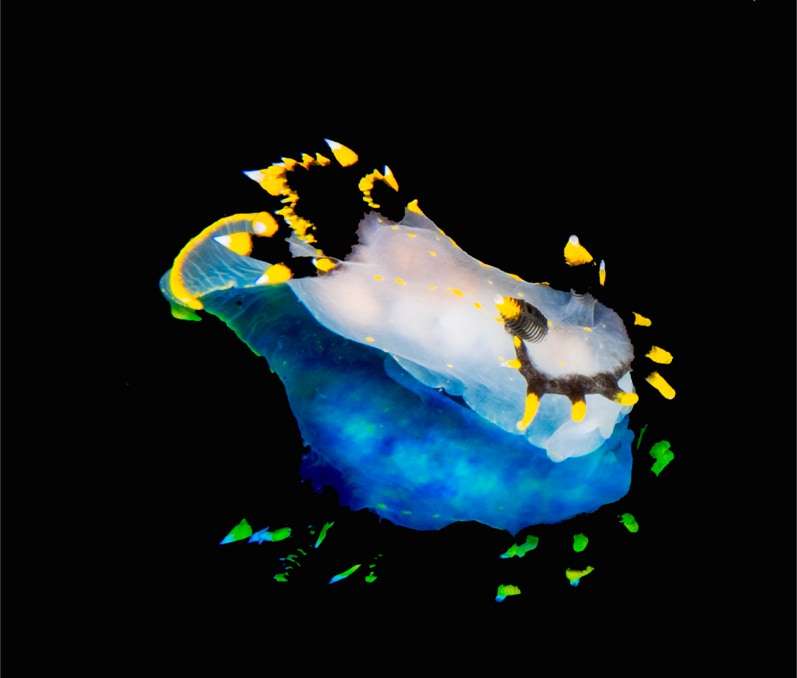
Here is a nice little Polycera tricolor from last week's dive sitting on the dichroic stage.
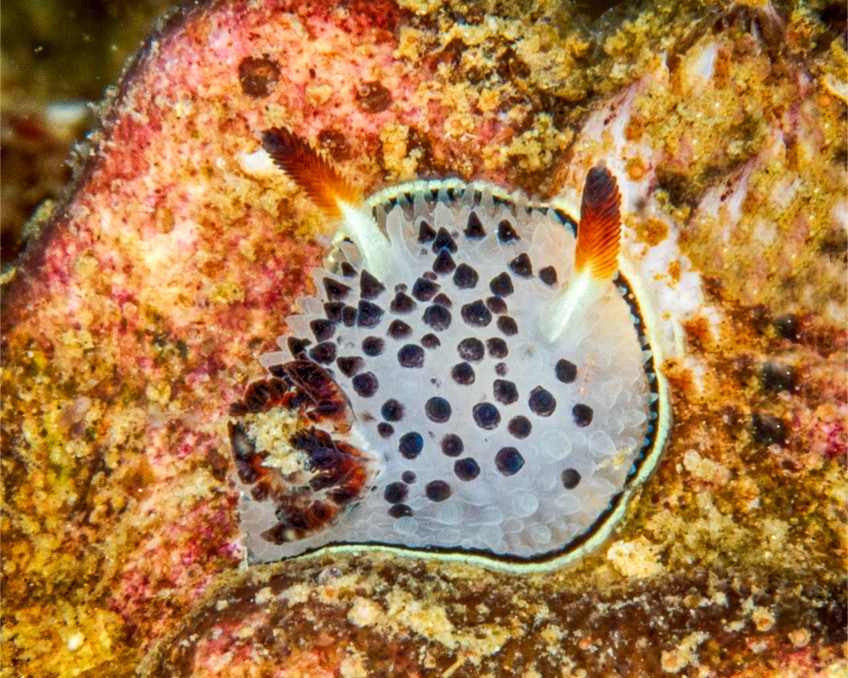
Here is a nice little Acanthodoris rhodoceras from our dive last week. I thought he was sitting on a rock but in fact was on the back of a hermit crab. When I first aimed my camera at him all of a sudden he jumped. According to Terry Gosliner, "Regardless of divergence estimates, our AAR suggests that Acanthodoris may have origins in the Atlantic Ocean with the Atlantic acting as a dispersal point to the northeastern Pacific”.
Seems like a long swim to me.
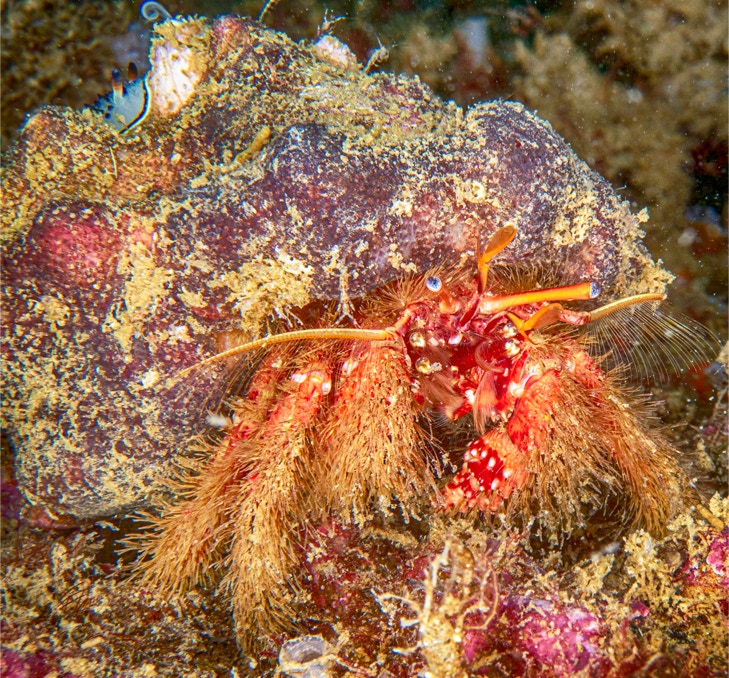
Here is the hermit crab that the Acanthadoris was on (you can see him top left). The water was indeed cold so the crabs fur is appropriate.
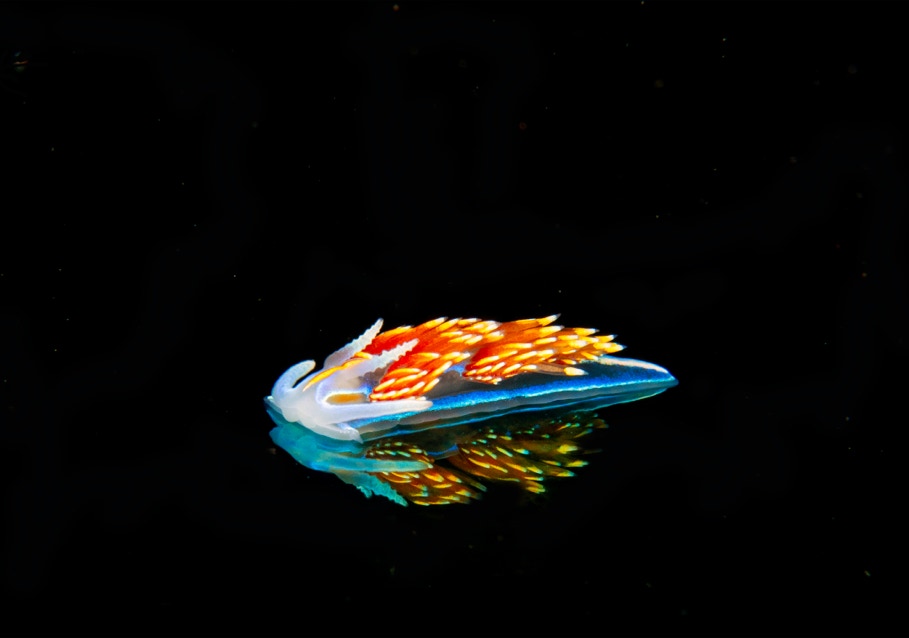
We are going diving again tomorrow with our friends (same crew as last Friday). Here is the last one from last week's dive; a tiny Hermissenda on stage but facing into the surge.
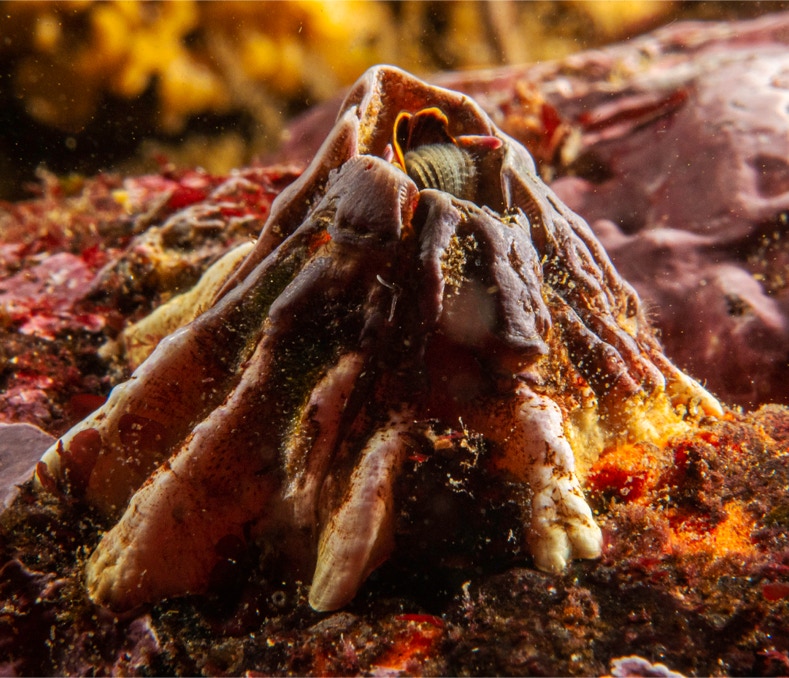
Here is a nice little barnacle that to me looks exactly like a volcano. Barnacles are related to crabs and other crustaceans. Solitary lifestyle makes reproduction tricky (they don't get around much anymore). Most are hermaphroditic (like nudibranchs) but in one species it is totally bizarre. The Rhizocephala superorder used to be considered hermaphroditic, but it turned out that its males inject themselves into the female's body, degrading to the condition of nothing more than sperm-producing cells.
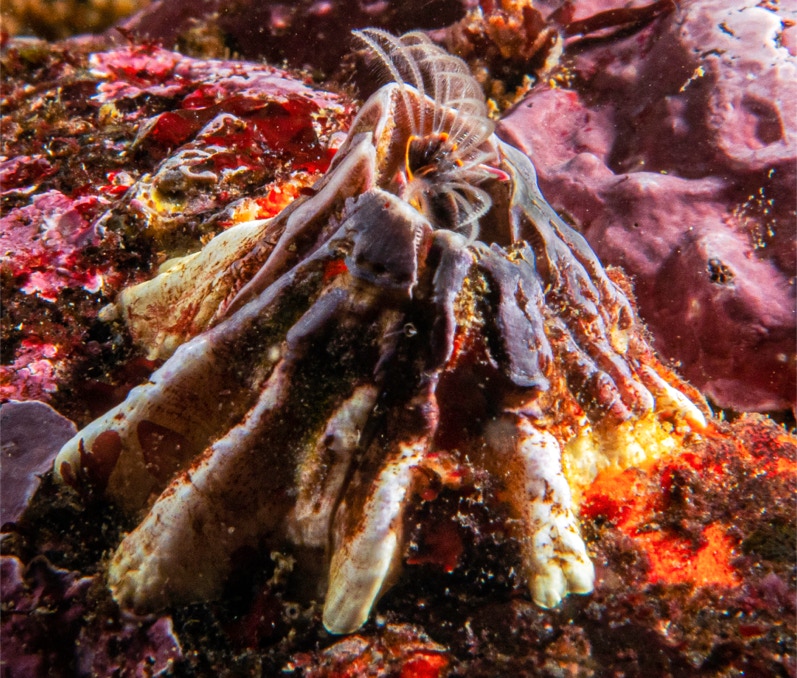
Here is another view of the nice little Mount Barnacle, this time with tentacles spread out. Not moving around much means bigger really is better. "The sessile lifestyle of barnacles makes sexual reproduction difficult, as the organisms cannot leave their shells to mate. To facilitate genetic transfer between isolated individuals, barnacles have extraordinarily long penises. Barnacles probably have the largest penis to body size ratio of the animal kingdom".
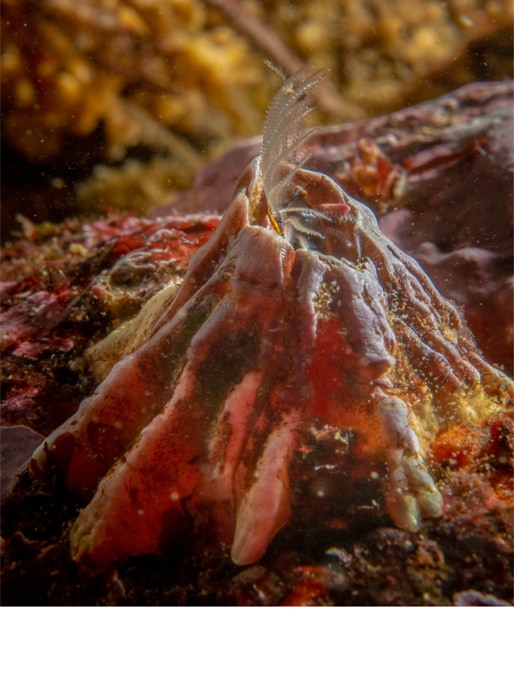
I know no one needs to see another Mount Barnacle erupting; this is just an excuse to tell a little more about barnacles. 150 years ago, Darwin (yes that Darwin) discovered the barnacle cement glands. Barnacle glue is much stronger than any synthetic glue but until only a year or two ago, no one had any idea how it worked. It can stick to any surface and once stuck is really hard to unstick. And the barnacle can make it stick underwater. It turns out that the barnacle larvae (cyaprid) first secrete an oil drop to clean the surface of any water then they secrete a series of phosphoproteins that make the cement. If you are really interested look here: Synergistic roles for lipids and proteins in the permanent adhesive of barnacle larvae by Gohad and colleagues. It turns out that the adhesive (polydopamine based) might be the most biocompatible and strongest way to affix things like spinal and hip implants.
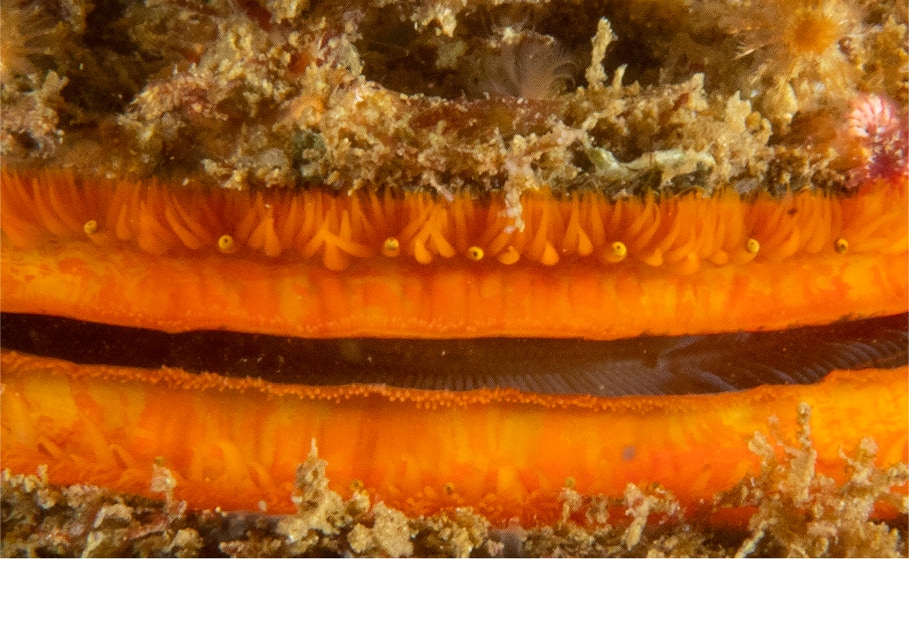
Here is a scallop we saw on the bottom on Saturday, diving with friends on the Giant Stride (our favorite boat). Here you can see 7 of his many eyes. Scallops and some clams have these eyes and in some ways they are more advanced than ours. In the scallop there is this perfectly spherical highly reflective layer reflector called the argentea. Unlike almost every other eye in nature, the scallop uses the concave reflective layer, the argentea, which sits close beneath the lens of the eye and reflects the image back to it – thus, reversing the image twice (once as it passes through the lens and once on the way back) and correcting it, unlike our own eyes. We see upside down, scallops see right side up. For all the gory details you can read "Image formation by a concave reflector in the eye of the scallop“by M.F. Land (1964) where he describes some experiments that look to me to be quite tedious to run. But cool.
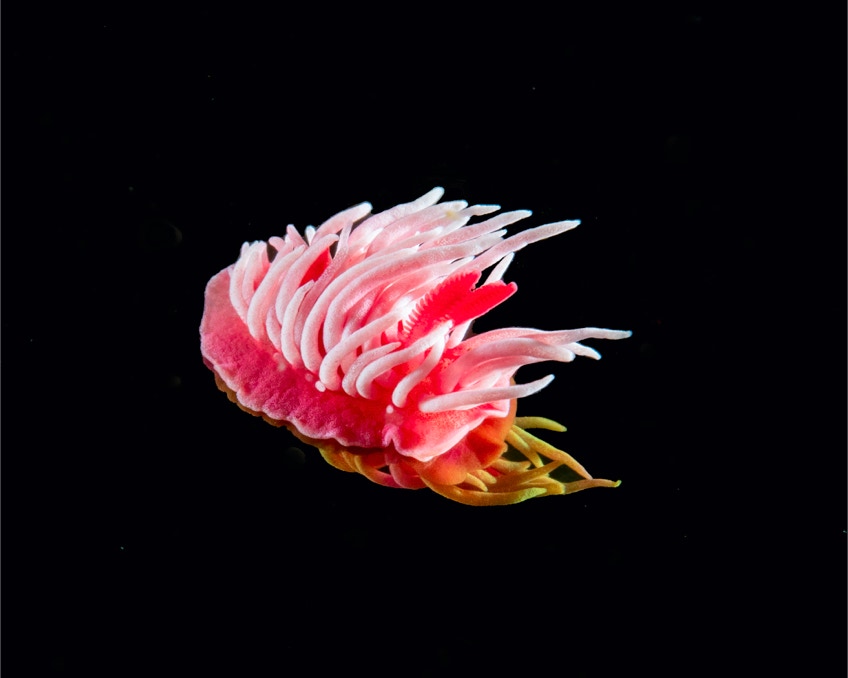
Here is a nice little (and I mean tiny, thank you Dana for finding it) Hopkins Rose, Okenia rosacea (used to be Hopkinsia) This is an unusual nudibranch where the head, mantle and foot are all combined into a flat plate. Also he has no oral tentacles. Why is he pink? Mostly because of hopkinsiaxanthin a carotenoid (like in carrots) that is found in his food, the bryozoan of the same color. The exact structure is still not known (the chemistry is complicated) but he still is pink.
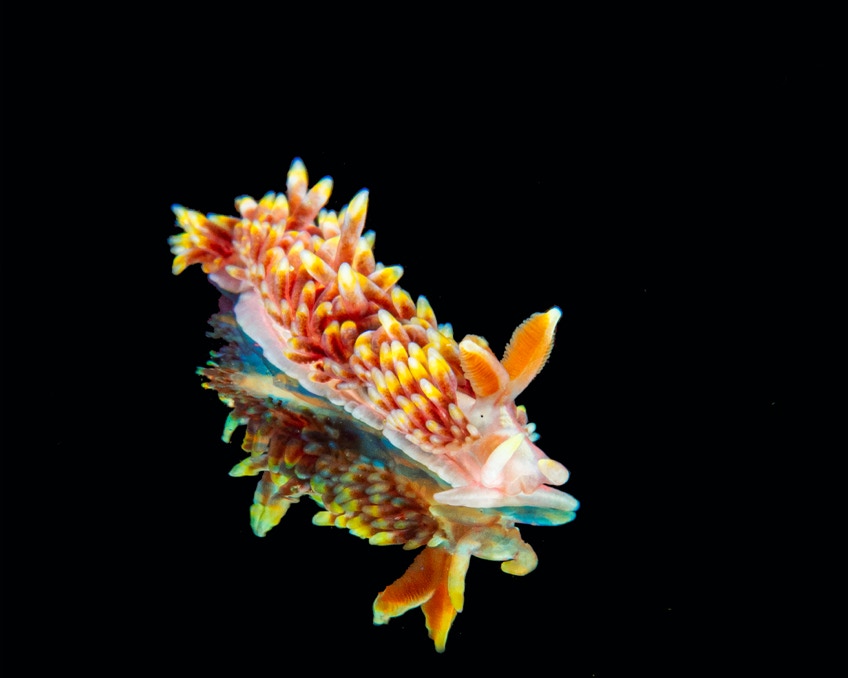
Diving for 20 years in California we had seen only one of these pretty little guys. In the last 2 weeks Nannette has found 2 (at 2 different sites). This guy is a Babakina festiva named for the famous nudibranch guy, Kikutaro Baba. It is originally from Japan and is listed by the State of California as an non-native species. It is thought to have come from Japan via ship but no one knows and perhaps it is a distinct species.
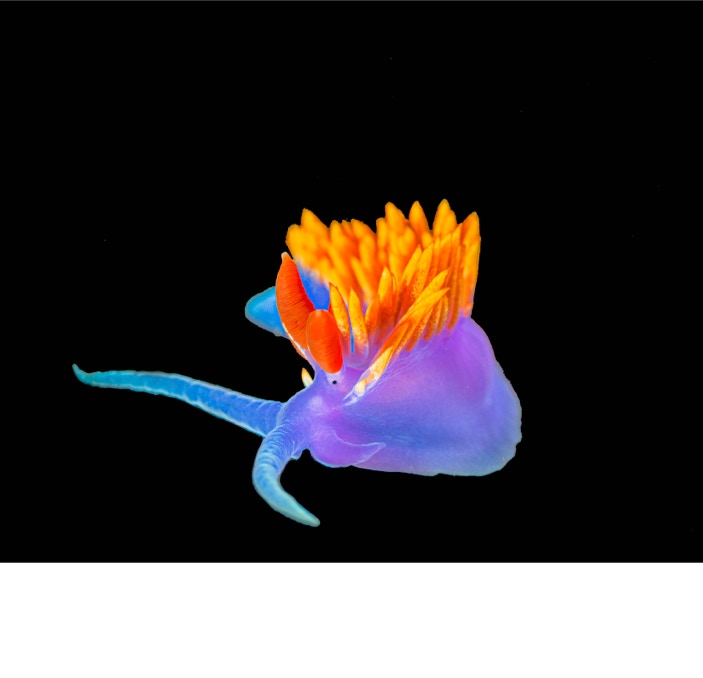
In a fit of madness, I made a new stage with one side an Elvis like black felt. No reflections, just pure black. It appears that we will be diving mostly here for the foreseeable future and most SoCal nudibranchs rather like the texture and some won't go onto a glass surface. This guy used to be Flabellina iodinea but is now Flabellinopsis (why?). All of the colors of this guy rise from the same pigment astaxanthin which is the same pigment found in many of the cold water shrimp. The compound is used to feed salmon in fish farms. The stuff costs about $6000 per kilo (you need a lot of spanish shawls to get a kilo of pigment). The reason that one pigment can make three colors is complex but from a simplified point of view there are three optical isomers possible. If you are really curious you can read “Determination of astaxanthin stereoisomers and colour attributes in flesh of rainbow trout (Oncorhynchus mykiss) as a tool to distinguish the dietary pigmentation source” by Moretti and colleagues. In any case here is a nice little shawl from our dive on the Giant Stride on Saturday. Cold and green but lots of cool critters.
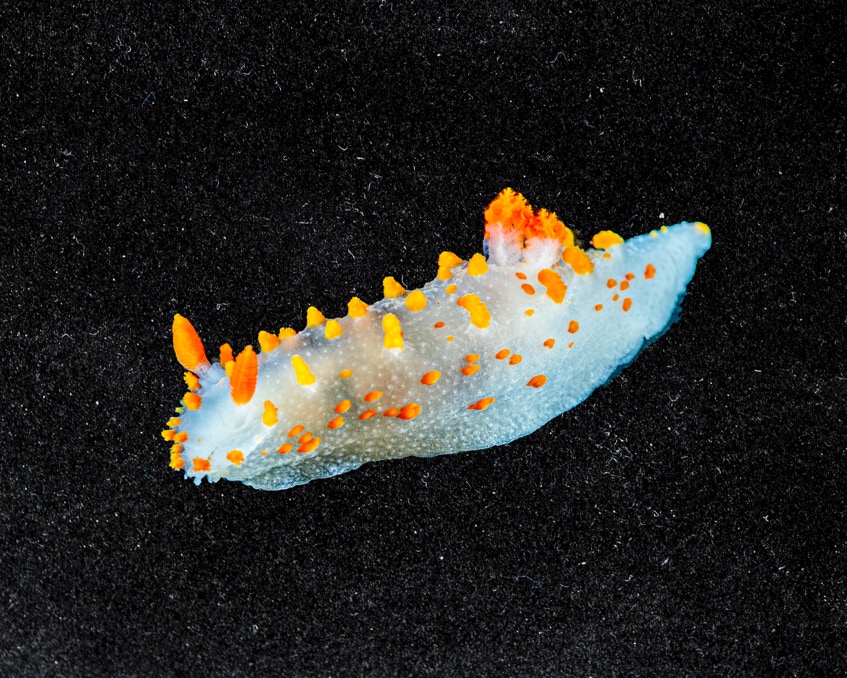
The last stage I built, I put on some black felt. Here is a clown nudibranch sitting on the felt. If I shoot at a very shallow angle I can make the felt look black. If I shoot more from the top, this is what you get. Not sure Elvis would approve.


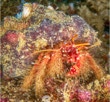







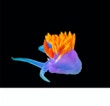

© 2020-2025 Nannette and Bill Van Antwerp